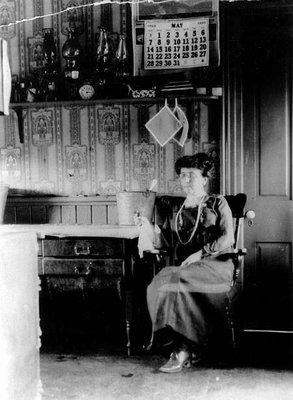The L.M. Montgomery Institute’s biennial conferences have always focused on a theme: L.M. Montgomery and Her Works (1994), Canadian Culture (1996), Message in a Bottle: The Literature of Small Islands (1998), Popular Culture (2000), Life Writing (2002), Interior and Exterior Landscapes (2004), Storm and Dissonance: Montgomery and Conflict (2006), Anne of Green Gables: The Idea of “Classic” (2008), The Matter of Nature (2010), Cultural Memory (2012), War (2014), Gender (2016), Reading (2018), and Vision (2020).
Apart from the play on “2020 Vision” (yes, in hindsight, many have noted the irony!), the idea of vision and visuality is particularly apt for Montgomery. As the call for papers for the 14th biennial conference outlined, "Montgomery found inspiration in what she saw around her, and she spent a lifetime translating what she saw into her writing and other creative works. The word vision derives from the Latin videre, "to see," but as Montgomery knew, there is never a direct or straight line between the observing eye and the object that is seen (or not seen). Beyond topics relating to 'visuality,' 'vision' might also suggest, among others, (in)visibility, prescience, dreams, wisdom, imagery or supernatural phenomena, apparitions and the visioning and re-visioning of material—including her own life—for which Montgomery is renowned."
As the sessions planned in the preliminary program indicate, in the over one hundred proposals that we received for presentations, panels, workshops, and creative projects, the theme of vision was interpreted imaginatively, whether broadly or narrowly, metaphorically or literally: Portraits of an Artist; Gendered Gazes; Second Sight and the Occult; Internal-External Vision; Maud and Anne on Stage and Screen; Through Legal and Political Lenses; Sealladh nan Gàidheal: Perspectives on the Scottish Gaelic Translation of Anne of Green Gables; Visualizing Self, Fear, and Relationships; Seeing and Reading Through Others’ Eyes: Reading Contrapuntally; Embodied Experience: Neurodiversity, Vision, and Creativity; Visibility for Orphans and Adoptive Mothers; Picturing Anne; Darkening Vision in Late-Life Works; Reimagining the Life and Work of Montgomery in Fiction; Visionary Gleams/Spots of Time; Learning to See and Respond: Young Adult Adaptation and Adapting; Visioning Heritage Sites and Archival Material; (Re-)Envisioning a Community and Nation; Recognizing Oneself in a Book; Visualizations from Around the World: Travel, Tourism, Geography; The Affective and Healing Power of Visual Imagination; Adjusting the Lenses on Montgomery’s Life; Material and Digital Visualization.
Over the next two months, Forum Mondays will profile how the content of the Forum is capturing the theme of vision, albeit on a smaller scale and in a less intimate venue than the originally planned in-person conference. Laying the groundwork for this is “Visual Culture, Storytelling, and Becoming Emily: An Illustrated Essay,” by the LMMI’s current Visiting Scholar, Lesley Clement. This paper examines Montgomery’s visualizing practices in developing Emily Byrd Starr as a woman and artist. It begins with an overview of what is meant by “visual culture” and how this is manifested in objects, artifacts, and places associated with Montgomery. It then discusses the essential quality of “‘virtual’ visuality” in Montgomery’s writings and the pioneering work done by Elizabeth Epperly in articulating the sources, characteristics, and effects and affects of Montgomery’s “visual imagination” on readers. Drawing on these various areas of visual culture—physical artifacts (biographical and fictionally inscribed), ways of seeing and not seeing (and the politics of being seen and not seen), and reader responsiveness—this essay explores the cultural “traces” of images, particularly portraits, and argues that Emily engages with—and ultimately resists—their encoded meanings and thus bequeaths a legacy to inspire others learning to look.
Next Week: Book Covers, Illustrations, Paratexts
Reminder: We are accepting content for the Forum until 31 December 2020.

And here is the larger point about Montgomery’s artistry and her lasting power: she teaches her readers/viewers to see what is there and what is not there; that is, she teaches her readers to see story and metaphor in images …
– Elizabeth Rollins Epperly, Through Lover’s Lane
(University of Toronto Press, 2007, p. 178)
Banner image of PEI waves. Anne Victoria Photography, 2018.